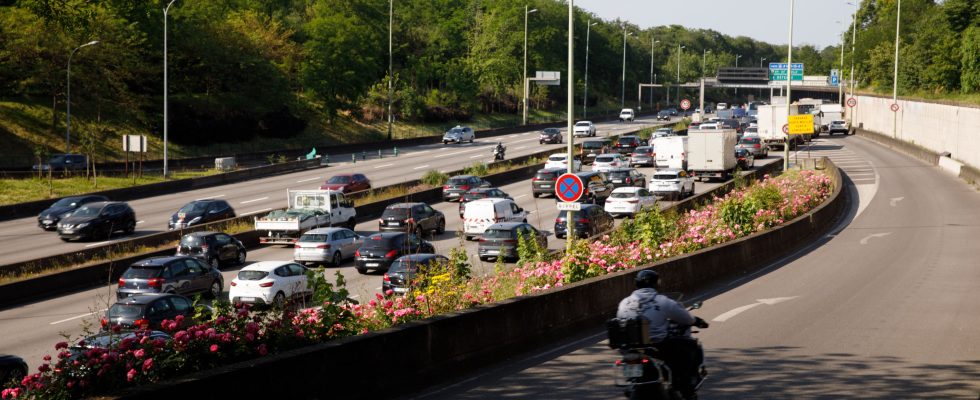Let’s start with two naive questions. The first: is the price of housing the same in Paris and in Creuse? The second: does going from République to Bastille by metro cost as much as a trip by car between Aubusson and Guéret, 50 kilometers away? In both cases, of course, the answer is no. But it has the merit of making this important idea clear: depending on where we live, the expenses we face vary considerably. In the city, accommodation is often overpriced. Far from cities, the transport budget is more expensive. How does this all balance out? This time, the question is not trivial and two fascinating studies recently published by France Stratégie (1) answer them.
This research organization attached to the Prime Minister measured the cumulative costs of housing and transport depending on where we live. Unsurprisingly, the larger the size of an urban area, the higher the property prices. A rule that gets stronger the closer you get to the center, particularly in the Paris region. Thus, a family living in the capital spends on average… 30% more than a household of the same configuration residing in an “urban area” of 200,000 to 700,000 inhabitants such as Tours, Rennes or Strasbourg, which itself spends 10 % more than a third family living in the countryside.
When we look at the cost of travel, it is no longer the size of the “urban area” (the central city and the dependent territories) that matters, but the distance of the accommodation from the center. When you live in the outskirts, the amounts spent on transport are 20% higher than those of a resident of the heart of the city, due to the costs linked to the car (purchase, maintenance, fuel).
In total ? It is in large cities that expenses are generally the highest because the housing budget is three times higher than the transport budget. From this point of view, metropolization, deemed beneficial for employment and income, is much less beneficial for the cost of living, as highlighted by the authors of the first study, Boris le Hir and Pierre-Henri Bono. Particularly in Paris, real estate madness obliges.
An “indicator of financial comfort”
The most interesting part, however, is yet to come. Because France Stratégie researchers did not just measure our spending. They also compared them to our resources to deduce an “indicator of financial comfort”: in short, what remains in our bank account once our constrained expenses have been deducted, whether it is not only transport and housing, therefore, but also food. And there, the perspective changes completely: in fact, although housing is much more expensive there than elsewhere, it is in the Paris region that the “remainder to spend” is the highest.
The explanation for this apparent paradox? It is simple to understand. If financial constraints are stronger in the capital, it is also where income is the best as the most qualified jobs are concentrated there. To take an extreme example, housing costs more in Neuilly-sur-Seine than in an industrial city like Dunkirk. But as the resources of Neuillé residents – where many CAC 40 bosses reside – are incommensurate with those of workers in the Flemish city, their available purchasing power ultimately remains much more comfortable. Knowing that we must be careful not to make any generalizations because what is true on average for the Paris region is not true for every Ile-de-France resident. A cleaning lady from Clichy-sous-Bois obviously does not have the same “remaining expenses” as a senior executive at La Défense. In total, the remaining purchasing power decreases as one moves away from the center of Paris, specify in the second study Pierre-Yves Cusset and Alain Trannoy.
Another factor explains Paris’s good performance in terms of “remaining spending”: in the most expensive areas, households sacrifice the comfort of their housing. Given the same configuration, a couple with two children who reside in the capital have, in fact, a smaller and/or lower quality surface area than a family of the same configuration in Toulouse, Brest or Laval. Let’s put it another way. In Ile-de-France, a pavilion with a terrace and garden remains accessible to the middle class who live on the outskirts. On the other hand, it is strictly unthinkable in Montparnasse or in the Marais.
It is therefore the differences in resources which explain the differences in “remainder to spend” between territories. An observation which, with hindsight, allows us to better understand the yellow vest movement. Certainly, to the extent that the additional expenses linked to travel are more than offset by the savings on housing, the cost of living remains lower when you live on the outskirts than in the center of an urban area. The problem is that French people who live far from urban centers have more modest resources andultimately, a lower “remainder to spend”. In 2018, the increase in fuel taxes reduced fuel taxes and increased their transport budget – one of their few comparative advantages. Hence the scale and duration of this conflict.
(1) “Housing and transport expenses: what trade-offs?” And “Remains to spend and territory”analysis notes n° 117 and 118 from France Stratégie.
.
